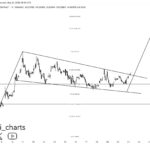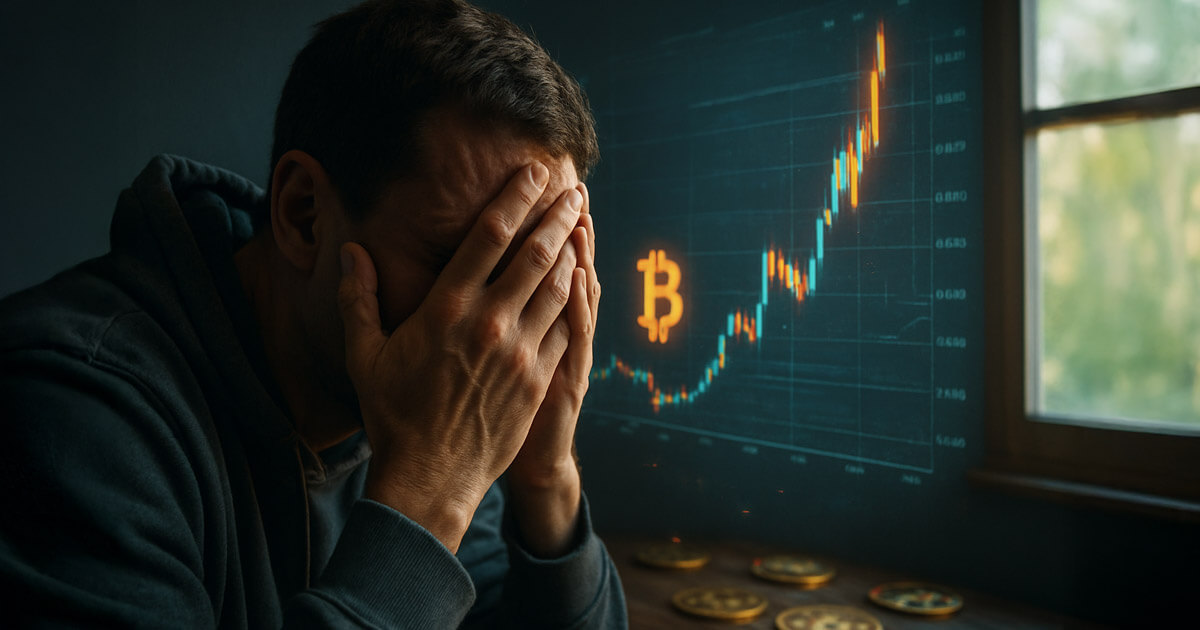
Indifference Reigns: The Anxiety of Missing Out Might Be Surpassing FOMO in the Bitcoin Market
A barista in Midtown Manhattan will check a ticker on his phone, noting the price at $110,630, and then return to steaming milk without further thought.
The sentiment matches the data, as search interest has remained in the low 40s for several months, a range reminiscent of when Bitcoin was priced below $30,000.
This may indicate we’re entering a phase dubbed “FIAMO,” or fear of missing out on what one has already missed.
Large investments are making the headlines, with BlackRock’s iShares Bitcoin Trust consistently attracting more capital than what miners are producing. Hunter Horsley, CEO of Bitwise, pointed out this disparity, stating, “Public interest, particularly among everyday investors, has significantly diminished,” despite the price hitting new peaks.
Supporting Data for FIAMO
Data regarding exchange volumes supports the FIAMO theory, as Coinbase reported $78 billion in retail trades during the first quarter of 2025, which is less than half the average transaction volume observed in 2021.
The platform experienced remarkable growth in 2021, with retail trading skyrocketing more than sevenfold compared to 2020, corresponding with the overall crypto market surge. However, the subsequent crypto downturn severely impacted retail, causing a 69% drop in volume in 2022 and another 55% in 2023.
With rising prices, the introduction of U.S. spot-Bitcoin ETFs, and improved sentiment, retail trading volume surged by 195% year-over-year in 2025. While there was a decrease from the extraordinary Q4 2024, Q1 2025 still outperformed any quarter in 2023, aided by Bitcoin’s achieving new all-time highs earlier in the year.
Many buyers hesitate to invest in a whole Bitcoin, and for some, purchasing fractions feels negligible.
Unit bias, while rooted in basic math, wields significant psychological influence. Exchanges promote purchasing small amounts of Bitcoin, yet the six-figure price tag often intimidates newcomers. Holding 0.001 BTC feels minimal, despite it reflecting the entire spot price from 2013. Until wallets begin to display amounts in satoshis, this mental hurdle will persist.
Additionally, the painful memories of the 2022 crash are still fresh for many, who either await recoveries or have suffered substantial losses. The rapid fall of notable platforms like FTX, Celsius, and Three Arrows erased not just savings but also investor confidence. Numerous small traders vowed never to chase skyrocketing charts again, a promise that is reflected in the flat search trends.
Veteran trading desks suggest this lull won’t endure, as capital flowing through ETFs often finds its way into broader retail trading channels once family and friends notice gains in their retirement portfolios. A similar pattern followed the gold-ETF boom of 2005; thus, the next surge may manifest more gradually through automatic paycheck investments rather than frantic last-minute trades.
However, pension funds in Wisconsin will miss out on such gains after divesting entirely from Bitcoin ETF holdings at a substantial profit.
Nevertheless, subdued search trends have misled investors before. In previous cycles, the Google search interest peaked months after price surges as more headlines reached casual investors. If history is any guide, FIAMO might soon transform back into the classic FOMO.
Political Influences on Bitcoin
The political landscape now adds complexity to the Bitcoin narrative. Former President Donald Trump has articulated a desire for the U.S. to lead in this domain and supports Bitcoin’s emergence as a significant asset, proposing the establishment of a Strategic Bitcoin Reserve. This shift positions Bitcoin less as a rebellious asset and more as a governmental resource, potentially dampening excitement for some casual traders, especially internationally, who may hold less favorable views of Trump.
Bringing Bitcoin into alignment with conservative politics may deter some from investing, but the blame for its politicization is shared across party lines. Those who oppose Trump’s policies should make efforts to separate Bitcoin from broader political debates.
Bitcoin stands independent of party affiliations and political divides within traditional finance.
As long as we remain tied to fiat currencies, the choice is Bitcoin or nothing.
As Satoshi once remarked,
“Maybe instead make it about the open source project and give more credit to your dev contributors; it helps motivate them.”
For the moment, the signs are clear: ETFs are absorbing supply, policy discussions are framing Bitcoin in reserve terms, and Google’s interest graph remains mostly unchanged.
The leading digital currency continues to set unprecedented records while the majority of observers seem scarcely aware.



















Post Comment